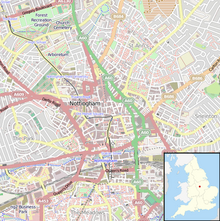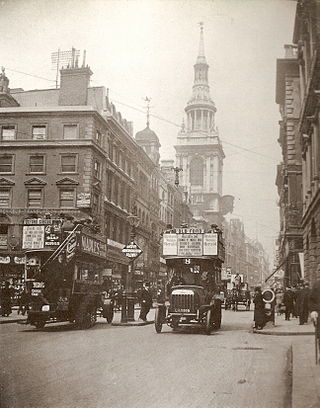
Cheapside is a street in the City of London, the historic and modern financial centre of London, England, which forms part of the A40 London to Fishguard road. It links St Martin's Le Grand with Poultry. Near its eastern end at Bank Junction, where it becomes Poultry, is Mansion House, the Bank of England, and Bank station. To the west is St Paul's Cathedral, St Paul's tube station and square.

Nottingham city centre is the cultural, commercial, financial and historical heart of Nottingham, England, and represents the central area of the Greater Nottingham conurbation.
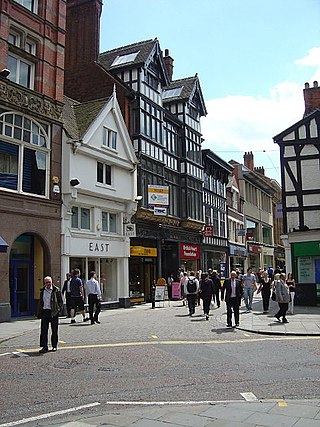
Bridlesmith Gate is a pedestrianised shopping street in the city centre of Nottingham, England. It is located between Middle Pavement and Victoria Street. St. Peter's Gate and Bottle Lane stem off it along with Byard Lane.

Watson Fothergill was a British architect who designed over 100 unique buildings in Nottingham in the East Midlands of England. His influences were mainly from the Gothic Revival and Old English vernacular architecture styles.
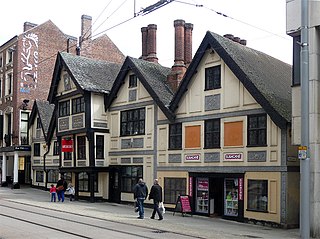
The Flying Horse Inn is a former public house in Nottingham. It was established around 1483. It is a Grade II listed building.
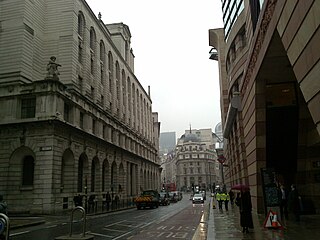
Poultry is a short street in the City of London, which is the historic nucleus and modern financial centre of London. It is an eastern continuation of Cheapside, between Old Jewry and Mansion House Street, towards Bank Junction.

Captain Gilbert Smith Doughty CE was an architect based in Nottingham and Matlock.

John Howitt FRIBA was an architect based in Nottingham.
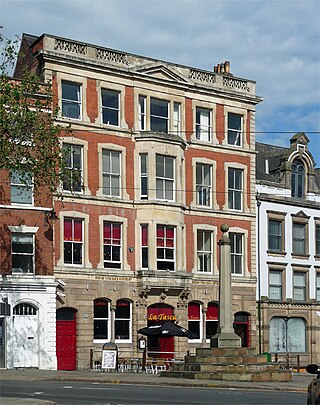
William Arthur Heazell FRIBA was an architect based in Nottingham.
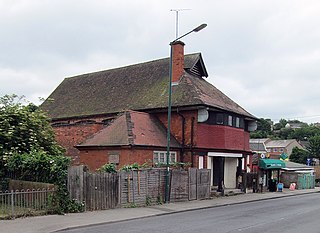
Arthur Richard Calvert was an architect based in Nottingham.

Albert Nelson Bromley was an English architect based in Nottingham.

Robert Evans FRIBA, JP was an English architect based in Nottingham.

William Jolley was an English architect based in Nottingham.

Russia Row is a street in the City of London that runs between Milk Street and Trump Street on the northern side of the former Honey Lane Market. Russia Court, formerly Robin Hood Court, the home of the Russia Company, was once located on the northern side of the street and the City of London School on the south side. The street is thought to have received its name around 1804, shortly before Russia decided to enter the Napoleonic Wars on the same side as Britain. It was damaged by German bombing during the Second World War and has since been completely rebuilt.

John Collyer was an architect based in Nottingham.

Milk Street in the City of London, England, was the site of London's medieval milk market. It was the location of the parish church of St Mary Magdalen which was destroyed in the Great Fire of London in 1666 and then of Honey Lane Market and the City of London School. The street was seriously damaged by German bombing during the Second World War and has since been completely rebuilt. Nothing remains of its former buildings.

Francis Williamson was a British surveyor and architect based in Nottingham.

The Nottingham Corporation Electricity Department was responsible for the production and supply of electricity in Nottingham, England, from 1894 to 1948.
Bridge ward is an electoral ward in the city of Nottingham, England. The ward contains over 270 listed buildings that are recorded in the National Heritage List for England. Of these, two are listed at Grade I, the highest of the three grades, 18 are at Grade II*, the middle grade, and the others are at Grade II, the lowest grade. The ward includes the centre of the city, and the area to the south towards the River Trent. The districts contained in the ward include Nottingham city centre, Lace Market and The Meadows.

